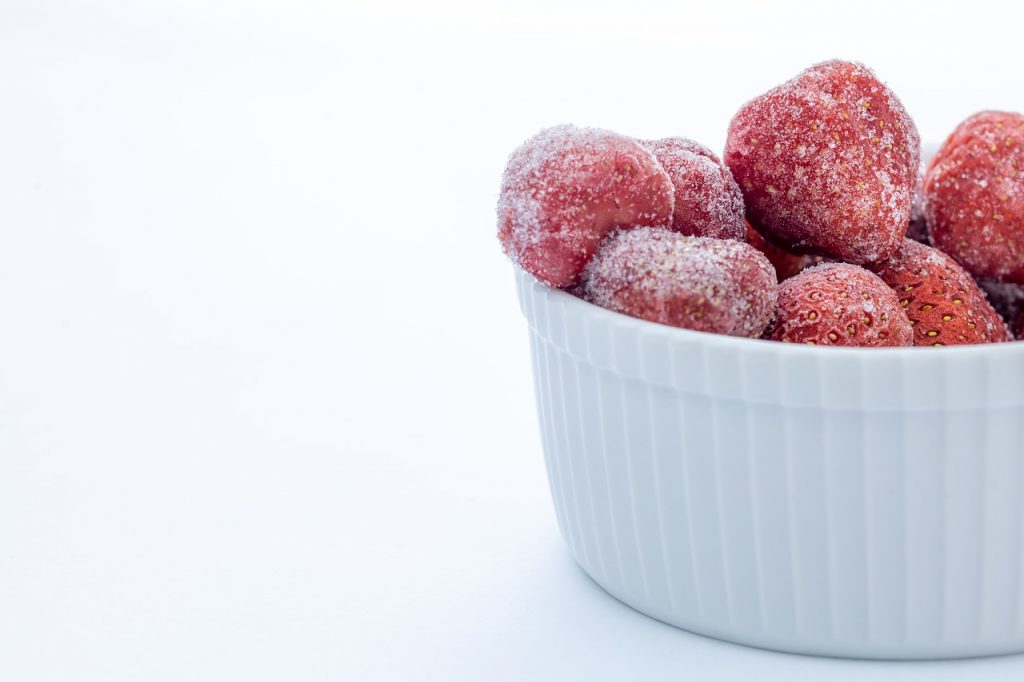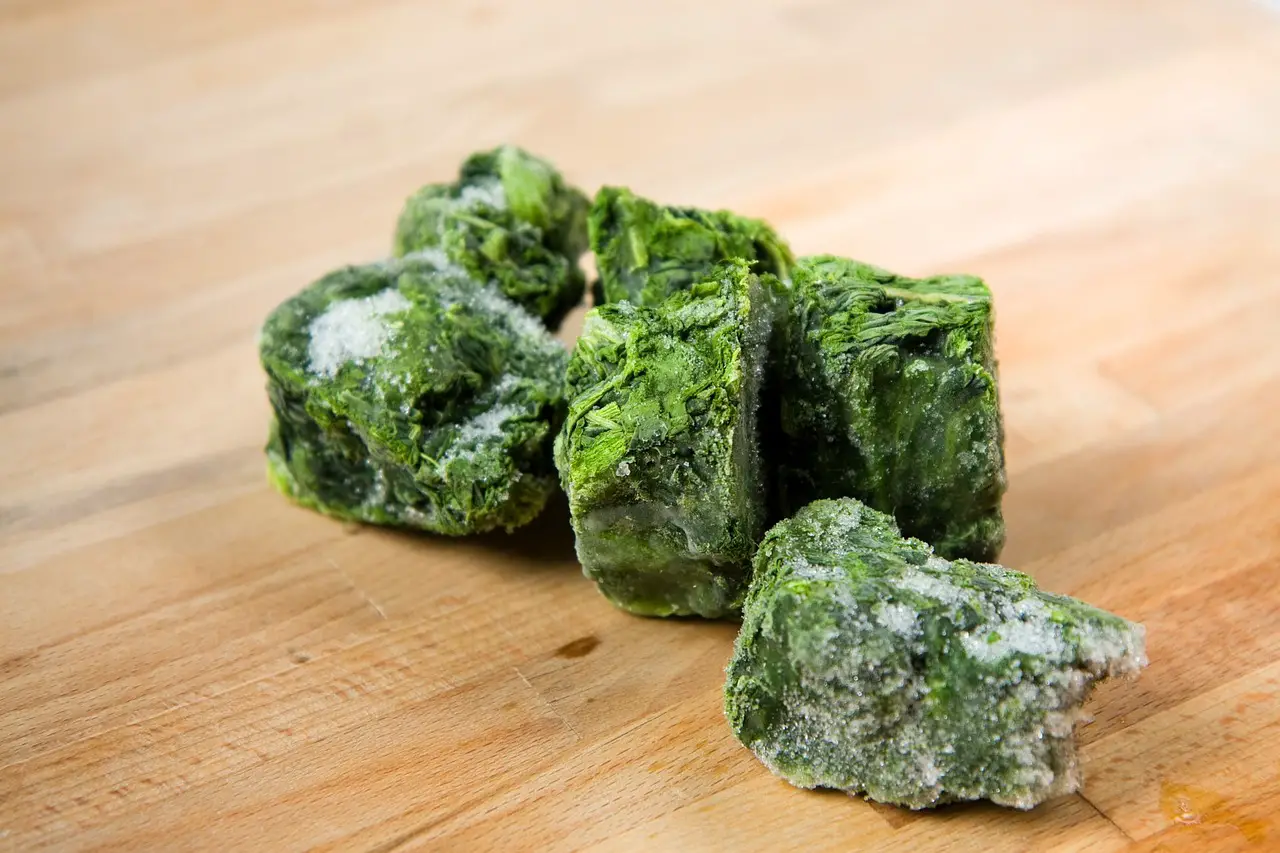If you want to keep your foods safe and fresh, you should try flash-freezing them. It’s one of the simplest ways to store your food. You can freeze foods such as meat, vegetables, and fruits. The process involves putting them in frozen containers, then transferring them to a cool place where they can be stored for several weeks or even months.
Flash freezing is a good way to keep produce fresh and retain its nutrients. There are several methods for frozen foods, some of which require more steps and are less effective. However, flash freezing is a good way to keep your food fresh and save time during your busy day. It’s also great for last-minute meals and lunches.

What is Flash Freezing?
Food can be frozen using the flash freezing technique to maintain its freshness, quality, and texture. Food is quickly frozen throughout the procedure at extremely low temperatures, often between -40°F and -60°F. This helps to swiftly drop the food’s temperature while maintaining its flavor, texture, and nutritional content.
The main advantage of flash freezing is that it lessens the likelihood that the food would develop huge ice crystals. Large ice crystals can harm the food’s cell structure, which could result in a loss of flavor and texture. Smaller, less harmful ice crystals are made possible by flash freezing.
How to Flash Freeze Foods?
Follow these steps to freeze food quickly:
- Prepare the food: The meal should be cleaned and divided into frozen portions. Ensure the food is completely dry because too much moisture can cause a freezer burn.
- Set up the food: Put the food on a baking sheet, pan, or another freezer-safe container. As this will prevent them from freezing together, ensure the food is not touching.
- Defrost in the freezer: For about an hour, or until the food is frozen, place the baking sheet, tray, or container in the freezer.
- Food packaging: After frozen food, you can remove it from the baking sheet, tray, or container and place it in freezer bags or airtight containers. To avoid freezer burn, make sure to remove as much air from the bags as you can.
- Food should be labeled with its name and the date it was frozen, so be sure to do this. This will make it easier for you to monitor the food and use it before it spoils.
- It’s vital to note that low-moisture goods like fruits, vegetables, fish, meats, and bread operate best when flash-frozen. Using this technique, foods with a lot of liquid, like soups or stews, might also not freeze.
- To achieve the greatest results, it’s also crucial to utilize a deep freeze with a temperature of -40°F or -60°F. Additionally, since flash freezing does not make food survive indefinitely, it is crucial to consume the food within a fair amount of time.
What is the Correct Method of Storing Flash Freeze Foods?
Here are some suggestions for keeping meals that have been recently flash-frozen:
- Retain the cold: Food that has been flash frozen needs to be kept between -40°F and -60°F. Keep the food in the freezer’s coldest area, such as the bottom or rear.
- Use freezer bags or sealed containers: To prevent freezer burn and maintain the food’s freshness, ensure the food is in airtight containers or freezer bags.
- Date the food on the label: Include the name and date the product was frozen on the label. This will make it easier for you to monitor the food and use it before it spoils.
- Make a list of the foods you have frozen and check it sometimes to keep track of the food. This will enable you to use the food before it spoils and ensure that nothing is left in the freezer’s back.
- Use the oldest food first: To reduce waste, use the oldest foodstuffs first when using frozen food.
- Do not overfill the freezer: The quality of the food may be impacted by temperature fluctuations in an overloaded freezer. Ensure the food has enough room to breathe so air may flow around it.
- Maintain the freezer door shut: Avoid opening the freezer door frequently to maintain a consistent temperature.
According to these recommendations, you may ensure that your flash-frozen food stays as fresh and sanitized to eat as long as possible. Always check the expiration date on food, and throw away any that has spoiled.
How Long does it Take to Flash Freeze Foods?
The size, thickness, freezer temperature, and type of food are just a few variables that will affect how long it takes to freeze food flash.
Typically, it takes 1-2 hours for most foods to freeze completely at -40°F or -60°F in a deep freezer. It could take up to four hours or more to prepare thick or heavy things, like a roast or a whole fish. But other things, like tiny berries or thin slices of meat, can freeze in as little as 30 minutes.
The food should still be used within a reasonable time because flash freezing does not make the food survive indefinitely. It is vital to remember that flash freezing is more of a strategy to lock the food in its fresh form than a preservation method.
To prevent over-freezing and quality loss, monitoring the food while it freezes is crucial.
Is it Possible to Flash Freeze Food at Home?
If you have a deep freezer at home that can get down to -18°C (-0.4°F) or below, you can flash-freeze food there. To maintain the food’s texture, flavor, and nutritional content, flash freezing entails immediately freezing the meal at an extremely low temperature. You can arrange the food on a baking sheet in a single layer and freeze it.
Tor long-term storage. To guarantee that the food is safe to eat, it is vital to remember that not all foods can be flash-frozen. Instead, normal food handling and storage pra For long-term storage, the food can be transferred from the freezer to an airtight container or bag should be used.
Does Flash Freezing Remove the Nutrients from the Food?
When food is flash frozen, often referred to as quick frozen, it is cooled to extremely low temperatures, usually around -40°F (-40°C). By delaying natural decay and halting the development of germs, this method helps to maintain the food’s nutritional content.
However, various variables, including exposure to light, air, and temperature changes, can cause food to lose some of its nutritional content over time. Therefore, the nutritional content of the meal will vary depending on how and for how long it was frozen.
Which Food Must Not be Flash Freeze?
Because of their texture or makeup, some foods shouldn’t be flash frozen. Fruits and vegetables with a high water content might lose their texture when flash-frozen or become mushy. Foods that are already frozen, such as ice cream or frozen yogurt, can also turn frosty and lose their smooth feel when flash-frozen.
Flash freezing should never be used on eggs in their shells since it might lead to cracked shells and rubbery yolks.
To stop bacteria from growing, raw meat and fish can be flash frozen, but they must be properly thawed before cooking and kept at very low temperatures (-20°C).
Casseroles and previously prepared soups may lose their texture or become watery when flash-frozen. To help preserve the surface, it is advisable to freeze these foods in smaller servings or sealed containers.
After the solid food items have cooled, pour the sauces, gravies, and other liquids over them to freeze them. This will make separating them easier and help keep them from freezing solid.
How to Identify Whether Flash Freeze Food is Bad?
There are various indicators that food that was previously flash-frozen has been contaminated:
- Discoloration: Food that has gone brown or grey may have been exposed to oxygen, which could have led to food spoilage.
- Off-odor: A foul odor may indicate that food has gone bad and shouldn’t be eaten.
- Ice crystals: Although flash freezing is meant to produce small ice crystals, the texture and flavor of the food may be impacted if the food has been thawed and refrozen if it has huge ice crystals.
- Change in texture: If the food has turned mushy or rubbery, it may have been thawed and refrozen, or it may have been improperly kept.
- Mold development: Food with visible mold should be thrown away since it has been ruined.
Make sure the food has been stored at the proper temperature, and look for any evidence of damage in the packaging of the food. Additionally, it’s critical to consume flash-frozen meals quickly.
What are the Side Effects of Consuming Spoiled Flash Freeze Foods?
Foods that have been flashing frozen and gone bad can harm your health. Food poisoning, which can result in nausea, vomiting, diarrhea, and stomach cramps, is one of the most frequent negative effects of consuming rotten food.
Additionally, spoiled food may include dangerous microorganisms, including Salmonella, E. coli, and Listeria, which can result in hospitalization and more serious illnesses. In people with compromised immune systems, such as the elderly, pregnant women, and young children, these germs can also result in serious illnesses.
Consuming damaged flash frozen food increases the risk of contracting a foodborne illness, which presents with symptoms like lethargy, headache, fever, and muscular aches. Foodborne infection occasionally results in long-term health issues or even death.
Food should always be stored properly, the expiration date should always be checked, and any indicators of deterioration, such as a rancid odor, discoloration, or mold, should always be taken seriously. To eliminate any potential health hazards, it is essential to throw away food if you have any reason to believe it may be spoiled.
Conclusion
Flash freezing is a technique used to freeze individual portions of food. It can be useful for foods that don’t have a lot of room in the freezer or if you want to freeze only the items you will use. The flash freezing process works by exposing the ingredients to low temperatures before freezing. This helps prevent ice crystals from forming, which can ruin the flavor of the defrosted greens.
Flash freezing is a great way to preserve foods and avoid waste. Typically, flash freezing involves spreading the food out on a baking sheet, then placing it in the freezer. However, some items are better suited for flash freezing than others. There are some ways to flash-freeze vegetables. Some of them require more steps than others. You may need to wash the produce, blanch it, or freeze it differently.
